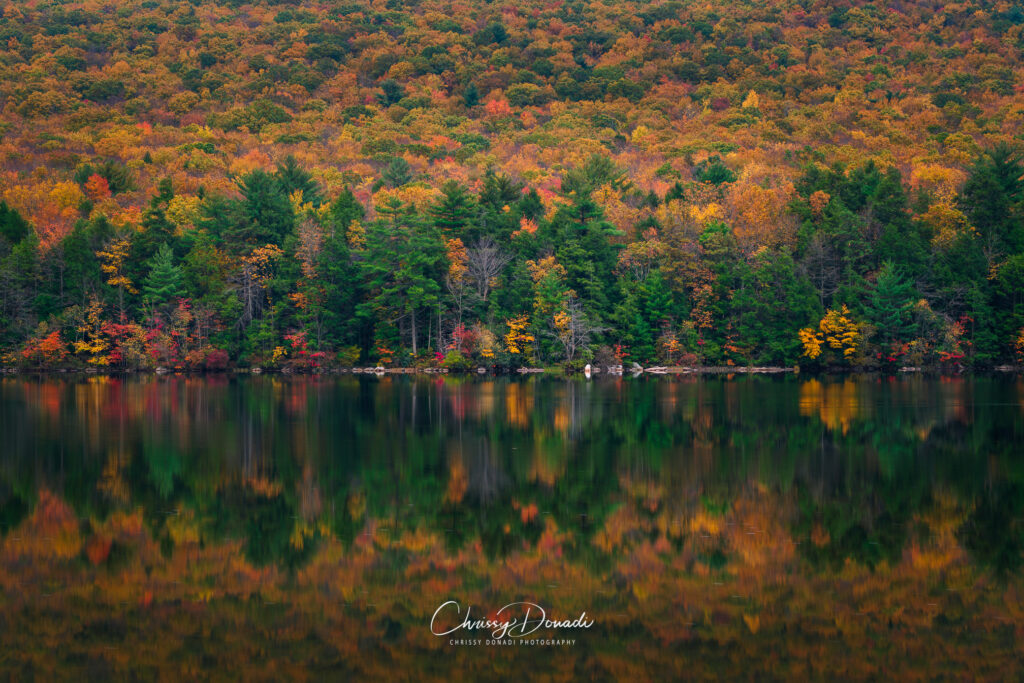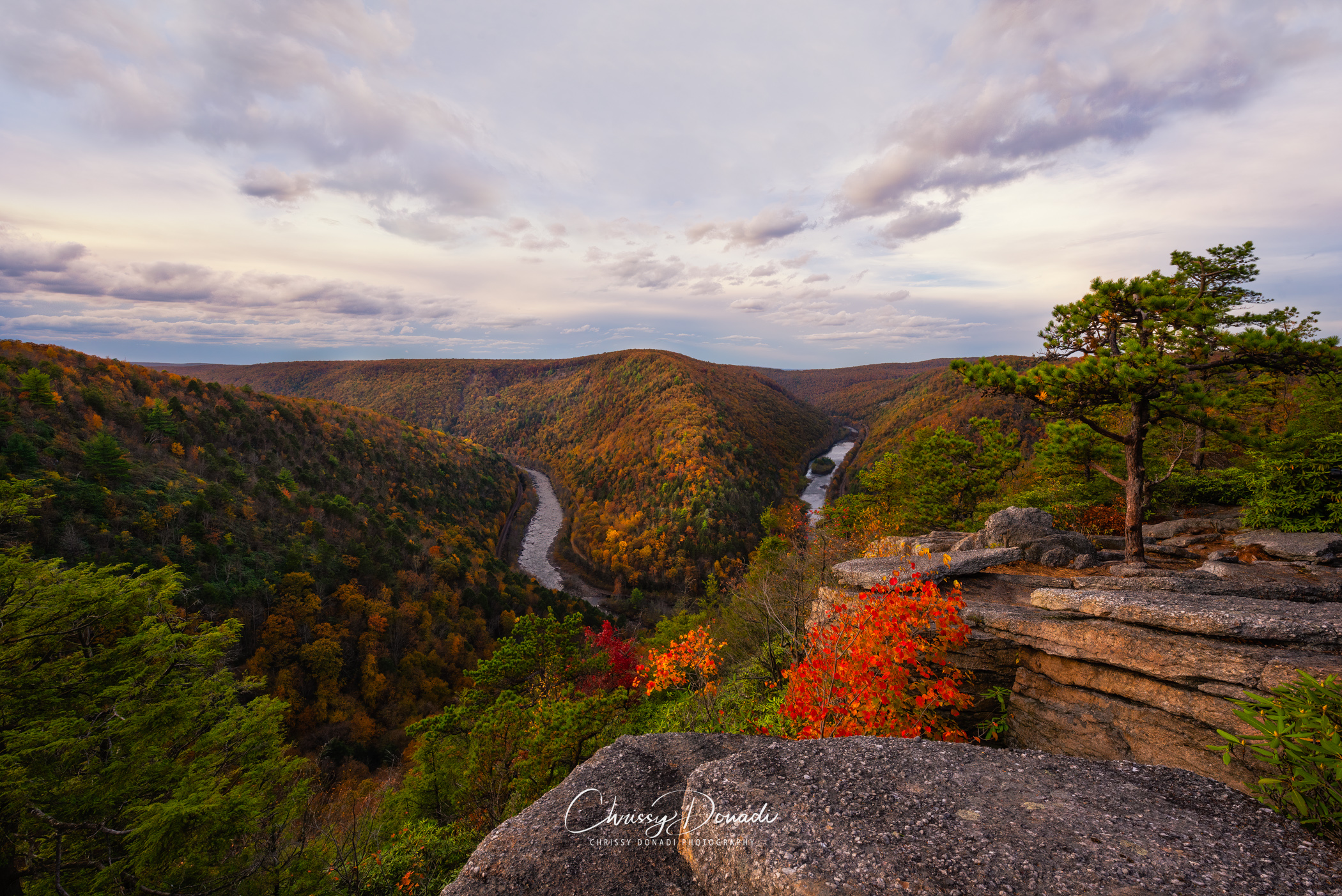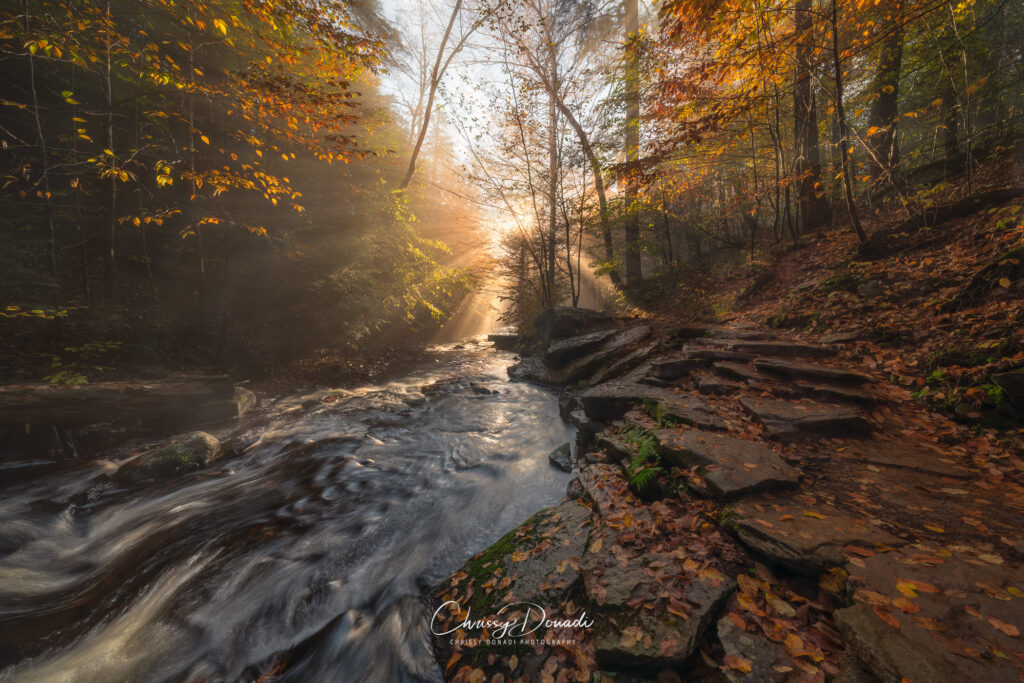The Secret to When Leaves Change Color
It’s true. Everyone wants to be out when fall color is at its peak, but predicting peak colors isn’t easy. Fall foliage reports may be helpful. However, often they are not extremely accurate at the time of trip planning. Imagine standing amidst a sea of fiery reds, golden yellows, and vibrant oranges, your camera poised to capture nature’s most spectacular show. This guide will help you master the art of fall foliage photography in the Northeast United States.

Understanding Fall Foliage for Better Photography
The timing of color changes in the leaves is primarily driven by the increasing length of night and drop in temperature. As the days grow shorter and the nights grow longer and cooler, biochemical processes occur and the leaves stop their food-making process. Leaves actually start out yellow. Chlorophyll, which is responsible for giving leaves their green appearance, is dominate in spring and summer. In autumn, with less hours of light, the chlorophyll breaks down, causing the green color to disappear. This absence of chlorophyll makes way to reveal the yellow and orange colors. On the other hand, red is derived from a chemical called anthocyanins that are produced as the leaf dies. It’s the same chemical found in the skin of grapes and apples.
Tree Species and Their Autumn Color Timing
Different tree species change colors at different times. In Pennsylvania, a few trees, such as Blackgum and Dogwood trees, show brilliant fiery reds in late August through September. In late September into early October, the maple trees will become red and orange. Typically, Oaks only show their yellow or red colors in October long after the Maple trees have shed their leaves. All of this variety of deciduous forest land, filled with trees and shrubs that seasonally shed leaves, is why Pennsylvania and the Northeast US have a longer and more colorful fall season than most other places around the world. Understanding these patterns is crucial for successful fall foliage photography.
Now, light, rainfall, and temperature contribute to degree and duration of fall color. However, if I want to put in those vacation days, typically, I’m going to hedge my bets based on when the number of daylight hours starts to give way to longer nights.

Planning Your Fall Foliage Photography Trip
This is the reason why many photographers schedule their workshops or travel a year in advance. The last week of September through the first 10 days in October is generally a good window for New York and Pennsylvania, particularly true for areas like the Poconos in Pennsylvania and the Catskills and Adirondacks in New York. I love to note that my home state of Pennsylvania is known for having a longer and more varied fall foliage season than any other state in the United States.
In New England, the northern areas of Maine and New Hampshire have leaves turning colors normally around mid-to-late September. Then, the colors peak around the middle of October. In the southern areas, such as Massachusetts and Rhode Island, color will start later and can last up through mid-October. The color is later simply because of the delay of the longer nights reaching the different latitudes.
This is the reason that planning a trip for mid-October offers a higher probability of arriving for some type of vibrant colors throughout the landscape. You can even follow the color south into the Great Smoky Mountains National Park. With this knowledge, the next step is to use the fall foliage maps to refine your travel plans.

Best Resources for Northeast US Fall Foliage Predictions
- U.S. Fall Color Map by Weather.com
- Fall Foliage Prediction Map for the US (a favorite)
- Pennsylvania Fall Foliage Reports
- Pennsylvania Peak Fall Foliage Map
- New York Peak Fall Foliage Map
- New England Peak Fall Foliage Map
Embracing the Beauty Beyond Peak Season
While it is beneficial to do the research and attempt to put yourself in the right place at the best time for autumn colors, it doesn’t always pan out perfectly. That’s life. Do not put away your camera if the timing is off or conditions are not perfect. There are plenty of opportunities to be found if you keep an open mind. Many of my best images are shot throughout the weeks leading up to and after peak.
If you go to enjoy the experience, you will find something to photograph. Experience and enjoy the beauty of sleeping in a little more before an autumn sunrise, the warmth of sipping coffee on a cool, crisp morning, or the sound of leaves rustling in the wind. Go explore and let those feelings feed into your adventure and where you decide to point your camera from grand landscapes to small scenes.
Remember, the most captivating images often come from unexpected moments. Stay open to the possibilities, and you might find yourself capturing the subtle beauty of early fall or the stark elegance of late autumn.
If you start out with the expectation that you want to go and enjoy whatever color and light you find, then you’ll find plenty of scenes that catch your eye which are worth photographing.
For more specific advice on how to photograph fall colors, be sure to check out my follow-up article: “How to Photograph Stunning Fall Foliage: 6 Essential Tips“.
Have you captured a stunning fall scene? Share your favorite autumn photography experiences in the comments below!
[…] true. Everyone wants to be out when fall foliage is at its peak, but predicting peak colors isn’t easy. Fall foliage reports may be helpful. However, often they […]